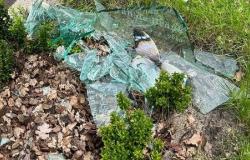The number of cattle slaughtered last year and this year is significantly higher than in previous years. This is probably due to the buffer strips and the abolition of the derogation. The extra manure disposal costs will make the last cow less profitable, expects dairy cattle industry specialist Rick Hoksbergen from Countus.
According to figures from the Netherlands Enterprise Agency, 10,900 cattle were slaughtered per week in the first fifteen weeks of this year. That is 777 more than in the same period in 2023. In the second half of 2023, with an average of 10,800 units per week, the number was more than 700 higher than in the same period in 2022.
During the count on December 1, 2023, CBS noted that the number of dairy and calf cows decreased by 31,000 in December 2023 compared to April. This brings the total to 1,546,000. With this decrease of 2 percent, this number is below the level of December 2018 for the first time. In addition, total Dutch milk production per day in the first two months of this year was 3 percent lower in January and February 2023.
‘Slaughter hooks nicely filled’
According to Derk-Jan Kuenen, livestock trader and chairman of the cattle trade sector committee at Vee & Logistiek Nederland, the slaughter hooks are ‘nicely filled’ with cattle. ‘Many cows are released. I think this is mainly inherent in the manure legislation. A cow doesn’t need to be chattered for long. Farewells are said earlier.’
A cow is not chatted for long, it is said goodbye sooner
Derk-Jan Kuenen, livestock trader and chairman of the cattle trade sector committee at Vee & Logistiek Nederland
Hoksbergen also thinks that the shrinkage is related to the restrictive measures regarding buffer strips and the phasing out of the derogation. This costs companies tens of thousands of euros. Buffer strips have led to a shrinkage of about 2 percent area. The costs for manure disposal, which were estimated two years ago at 15 euros per cubic meter, have doubled. It may also be a factor that some companies will close down and scale down in the coming years.
Dispose of manure
‘Almost everyone now has to dispose of manure. This means that entrepreneurs are more critical of the return on each cow. In addition, you have more work to do with those last cows. With slightly fewer cows you have more space in the stable and at the feeding fence,” says the dairy cattle industry specialist.
According to Hoksbergen, the focus on manure also has an effect on the price for phosphate rights, which is now a third of the top price of a few years ago. He thinks the bottom has not yet been reached. ‘Livestock farmers who are now shrinking slightly are retaining their phosphate rights. When they grow, they are on the shelf.’
Tags: Significant increase cow removal continues





